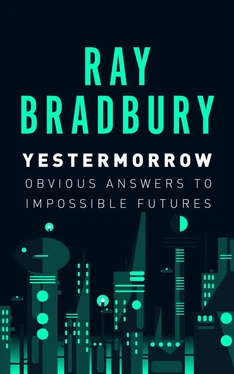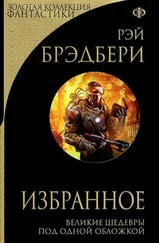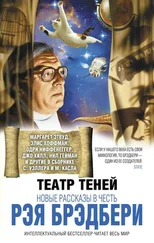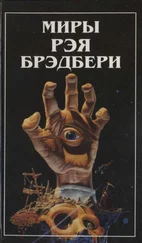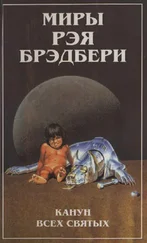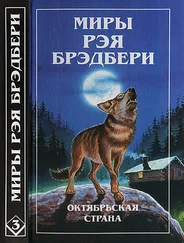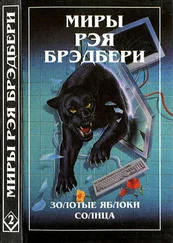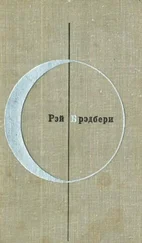“Because,” I said, “if we can get life-size, three-dimensional images of Mickey and Donald and Pinocchio and Maleficent, and place them on both sides of the Museum Corridor, then when you walk through the halls, the whole museum will walk with you! It will be an animated museum that animates, the first in history. My God, a museum that not only celebrates animated motion, but moves in an earthquake of action, propelled forward, accompanying you as you walk, pause, go ahead again or step back.”
“Good Gravy,” or something like that, everyone said.
Phone calls were made. A company was found that could make the plastic sheets with photography imbedded in long vertical strips like Venetian blinds set sidewise.
The name of the process, the same one that binds those tiny dinosaurs into your measuring ruler so they raise or lower their heads, was lenticular photography. It has been around for years, imbedded in measuring sticks, calendars, and postcards. Now I wanted to grow it to giant size to set free Monstro the Whale, Flowers and Trees, Bambi and the Wicked Witch in the Museum of Disney Animation. My God, I thought, if only we can do it. No, I thought, my God, we must!
So my plan, scribbled out swiftly on a note pad, and brought to perfection by artists sitting with us, was this:
Up front in the Moviola Mickey traveling museum must be a series of Moviolas, those editing machines into which you peer as into kaleidoscopes or wishing wells, to watch the editable flickers, the images of films that you can cut and slice to fit your fancy, run a riot or end a plague. From one of the large-size Moviolas a huge boa constrictor of film would leap. Arcing across the lobby area the film frames would grow larger and larger until they reached a wall and became a door. Future audiences would step through the slotted film-frame and advance through a long, serpentine-like corridor, a history of animation. Gertie the Dinosaur would perambulate with them as they strolled, and then Mickey and Minnie and all the other barnyard friends would follow, imbedded in lenticular Venetian blind slats upended on the vertical. As the audience advanced, they would encounter videocasette frames in the walls in which, for a half minute or minute, scenes from Steamboat Willie or The Skeleton Dance would be repeated endlessly. Moving on, the shapes and the colors in the lenticular walls would change.
With Flowers and Trees , the lenticular images would assume all the rainbow colors. And the old barnyard cartoons would find an additional friend, Donald Duck, to walk with lenticular hops and jumps into the years ahead. Images of the Band Concert would whirlwind in the three-dimensional walls, leading us to The Old Mill, where again convenient videocassette screens would illustrate Disney’s progress leading up to Snow White and the Seven Dwarfs, Fantasia, Pinocchio and beyond. Needless to say, the Dwarfs would march to and from work in the walls, pursued by the Whale, the Dinosaurs, and Maleficent and her monsters.
In a great theater at the end of the exhibit, a longer demonstration on the wide screen would give Fantasia a chance to expand and drown us in color and sound.
At the finale of our trek, accompanied by bright mobs of familiar friends and enemies, photo-imbedded in every inch of corridor paneling, in one long strip of film, it would seem, by the notched projector holes in ceiling and sill, we would step out of the serpentine and see the film we had inhabited snake up on the air and spiral down to vanish into a final Moviola waiting to devour it.
There you have it. A museum that is one long three-dimensional march through animation history. A museum of animation that animates. A corridor where antic shadows wait to escort you through time. An exhibit, what’s more, that can be taken apart, like Lego architecture and moved from Denver to Seattle to Chicago to the Museum of Modern Art to the Smithsonian and back, and perhaps, to some half-permanent, shadow-show perch at EPCOT or Disney World.
That’s how I cranked the big Moviola.
Now it’s up to the Disney Mousekeepers to run the flickers and start the show.
1991
BEYOND 1984: THE PEOPLE MACHINES
Optimism is an excuse to behave optimally.
People ask me to predict the Future, when all I want to do is prevent it. Better yet, build it. Predicting is much too easy, anyway. You look at the people around you, the street you stand on, the visible air you breathe, and predict more of the same. To hell with more. I want better. My plan is to sneak us by 1984 when it isn’t looking and make it to the high ground of 2001, which will be a good year, a vintage year. Who says? I do. Guaranteed? If you follow my nose.
First off, between now and 1999 we must engage in the greatest Airlift in History.
To save Berlin? No. Beach more boat people? Hardly. To salvage refugees adrift in a wrecked city called Detroit, New York, or Chicago? Yes.
For if we can take in one million Cubans, and welcome four hundred thousand strangers each year from far places, we can surely pull three or four million Americans out of their Primeval Digs and Black Holes.
Up and away from the Chicago Abyss. Down and onto the Kansas Plain. OZ has got to be out there somewhere, doesn’t it? For God’s sake, let’s find, no, let’s build it! For it’s no use airlifting beast-people out of their sties if we have nowhere to go, nowhere to put them down.
Once upon a time, of course, there were places. They were called small towns. But for various reasons—jobs, money, wanderlust, sex, technological change, mass media—the siren metropolis called, and the Jerkwater Stops fell flat in the dust. What was left of the small town was smothered and crushed when a Juggernaut Shopping Mall wheeled mindlessly through and squatted in a meadow a mile out from Main Street to sell its medicines and grab yokels.
The pattern is familiar now. We have seen it repeated and repeated by mall builders, who think too much and city fathers who think too little.
The situation calls to mind that Mexican farmer who, 36 years ago, while plowing his field, stumbled over a small fire-and-smoke pothole in the midst of his maize. By late afternoon, there was a small creek of lava in his front yard. At noon the next day, the hut was long lost in a burning river. When it was all over, a mountain of lava had surrounded and taken the nearest village and put the town church hip-deep in cooling rock. So, the Paricutin volcano was born.
For that surprised Mexican farmer, substitute your typical small town mayor and chamber of commerce. For Paricutin, substitute any one of several thousand shopping malls or centers that have erupted across America in the past ten years, and you have an inundation in reverse. The townsfolk rushed out to view the shopping explosions. Downtown Pigs Poke, Idaho, soon resembled Saturday night at the old burying ground. When the folks wandered back in from the shopping mall cow pasture, they took one look at Main Street and never set foot in it again or went away to Minneapolis forever.
How do you make the small town work again? How do you prepare it for my airlift of forlorn and despairing city folk clamoring to be born-again hayseeds?
Putting wheels on the meadow mall and rolling it back into Dead Falls won’t do it. But it would be a start.
All right then, what do we build?
A People Machine.
Walt Disney didn’t exactly patent the idea, but by God he surely reinvented it. Disneyland and Disney World contain many of the Machine units that we could nail together and set down in a thousand lost towns between now and 1990.
What are we talking about? Not just a shopping center where people come to buy one sheet, one shirt, or one shoe, but a place where lingering, staying, dawdling, socializing are a way of life. A refuge from the big city, or, sometimes worse, your own parlor. A place so incredibly right that mobs will rush to it crying “Sanctuary!” and be allowed in forever. A place, in sum, where people can come to be people. The idea is as old as Athens at high noon, Rome soon after supper, Paris at dawn, Alexandria at dusk.
Читать дальше
